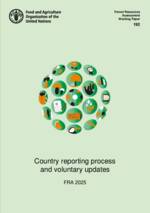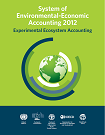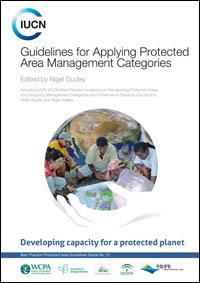- Biblioteca CEPAL
- Biblioguias
- Estadisticas Ambientales en inglés
- Environment and climate change statistics for Latin America and the Caribbean
- 1.2 Land Cover, ecosystems and biodiversity
Environment and climate change statistics for Latin America and the Caribbean
FDES - Sub-components 1.2: Land Cover, ecosystems and biodiversity
This subcomponent organizes environment statistics on land cover, ecosystems and biodiversity, as well as their recordable changes over time and across locations.
The topics included are:
- Land cover
- Ecosystems and biodiversity
- Forests
Documents and publications
-
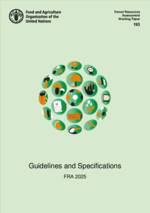 Global Forest Resources Assessment FRA 2025: Guidelines and Specifications
by
Publication Date: 2023
Global Forest Resources Assessment FRA 2025: Guidelines and Specifications
by
Publication Date: 2023 -
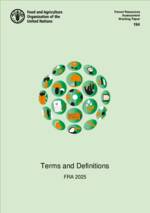 Global Forest Resources Assessment FRA 2025: Terms and Definitions
by
Publication Date: 2023
Global Forest Resources Assessment FRA 2025: Terms and Definitions
by
Publication Date: 2023 -
Global Forest Resources Assessment 2020: Key findings by
Publication Date: 2020 -
CBD Handbook (the 3rd Edition)
Convention on Biological Diversity Handbook -
 Millenium Ecosystem Assessment
https://www.millenniumassessment.org/es/index.html
Millenium Ecosystem Assessment
https://www.millenniumassessment.org/es/index.html -
State of Europe’s Forests 2020 Report by
Publication Date: 2020 -
Global Assessment Report on Biodiversity and Ecosystem Services by
Publication Date: 2019
Manual MDEA 1.2.
-
Manual of the Basic Set of Environment Statistics of the FDES 2013 - Ecosystems and Biodiversity Statistics by
Publication Date: 2018 May | Version 1.0 08Methodology sheet of the Basic Set of Environment Statistics of the FDES. (Topic 1.2.2: Ecosystems and biodiversity) -
Manual on the Basic Set of Environment Statistics of the FDES 2013 - Forests, Use of Forest Land, Timber Resources and Other Non-cultivated Biological Resources Statistics by
Publication Date: 2018 September | Version 1.0Methodology sheet of the Basic Set of Environment Statistics of the FDES. (Topics 1.2.3: Forests, 2.3.2: Use of forest land, 2.5.1: Timber resources, and 2.5.5: Other non-cultivated biological resources of the Basic Set of Environment Statistics of the FDES 2013)
Databases
-
ECOLEX- The gateway to environmental law | Legislación relativa a la diversidad biológica Este enlace se abre en una nueva ventanaECOLEX is an information service on environmental law, operated jointly by FAO, IUCN and UNEP.
-
FAO - Global Forest Resources Assessment 2020 (FRA 2020)FRA 2020 examina el estado y las tendencias de más de 60 variables relacionadas con los bosques en 236 países y territorios en el período 1990-2020.
-
ISSG - Global Invasive Species Database Este enlace se abre en una nueva ventanaThe GISD aims to increase public awareness about invasive species and to facilitate effective prevention and management activities by disseminating specialist’s knowledge and experience to a broad global audience. It focuses on invasive alien species that threaten native biodiversity and natural areas and covers all taxonomic groups from micro-organisms to animals and plants.
-
IUCN- Red List of Threatened Species Este enlace se abre en una nueva ventanaEstablished in 1964, the International Union for Conservation of Nature’s Red List of Threatened Species has evolved to become the world’s most comprehensive information source on the global conservation status of animal, fungi and plant species.
-
UN Environment Protected Planet database Este enlace se abre en una nueva ventanaProtected Planet is the most up to date and complete source of information on protected areas, updated monthly with submissions from governments, non-governmental organizations, landowners and communities. It is managed by the United Nations Environment World Conservation Monitoring Centre (UNEP-WCMC) with support from IUCN and its World Commission on Protected Areas (WCPA).
-
UN Biodiversity LabProviding decision makers with the best available spatial data to put nature at the center of sustainable development.
-
UNSD Environmental Indicators Este enlace se abre en una nueva ventanaUNSD disseminates global environmental statistics with indicators compiled from a wide range of data sources, on ten themes: Air and climate; biodiversity; energy and minerals; forests; governance; inland water resources; land and agriculture; marine and coastal areas; natural disasters; and waste.
Methodologies and classifications
-
-
 2006 IPCC Guidelines for National Greenhouse Gas Inventories
/
Fecha de publicación: 2006
2006 IPCC Guidelines for National Greenhouse Gas Inventories
/
Fecha de publicación: 2006 -
Guidelines for the Rapid Ecological Assessment of Biodiversity in Inland Water, Coastal and Marine Areas /
Fecha de publicación: 2006 -
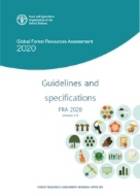 FAO Global Forest Resources Assessment (FRA 2020) Guidelines and Specifications
/
Fecha de publicación: 2020FRA 2020, Version 1.0. Working Paper No. 189
FAO Global Forest Resources Assessment (FRA 2020) Guidelines and Specifications
/
Fecha de publicación: 2020FRA 2020, Version 1.0. Working Paper No. 189 -
Convention of Biological Diversity
The Convention on Biological Diversity (CBD) entered into force on 29 December 1993. It has 3 main objectives: the conservation of biological diversity; the sustainable use of the components of biological diversity; the fair and equitable sharing of the benefits arising out of the utilization of genetic resources.
-
The Biodiversity Indicators Partnership (BIP)BIP is a global initiative to promote the development and delivery of biodiversity indicators.


